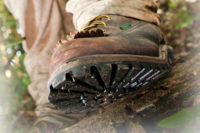While no one hopes they have to use first-aid/CPR, those that are to respond to an incident must find a way to keep their skills sharp, even despite inactivity. Like the young man who asked how to get to Carnegie Hall, there is only one solution: "Practice, practice, practice."
Practice trainings or drills are needed so that your responders know what to do when an incident occurs. The information they've accumulated during certification needs to be reinforced through constant practice in order for the responder to feel confident in his or her ability to treat a victim appropriately during a time of crisis.
These "confidence-building" sessions are important not only for those who are new to emergency response but also for those who do not have the opportunity to use their skills very often.
Know the drill
While the goal of these drills is clear, some care must be taken in how these sessions are conducted in order to achieve their maximum benefit. When planning a first-aid/CPR class or drill, keep the following guidelines in mind:1) Training scenarios must be explained in detail so that the desired outcome is clear. The responders must know what they are expected to do and under what conditions they will be working.
2) Trainings should be tiered. The first drills should be relatively simple events emphasizing the very basics in first response. As training classes progress, the scenarios can become more complex as the responders become more proficient in their skills.
3) The trainings must be conducted using the same equipment that the responders will use in an actual emergency. Ideally, your employees should have received their initial training on the same equipment that the company is using, but this is not always possible.
4) Drills must be realistic. The situations presented should be typical of those that would be encountered on the job. To add to the realism have other employees who are not responders play "victim." Use props like fake blood and other makeup. This will make the training fun and interesting.
5) Practice using all the equipment that would be used in an actual emergency, including personal protective equipment (PPE). Participants may be surprised to find that it's a little more difficult to apply a bandage or take a blood pressure with gloves on.
6) The exercises should be carried to conclusion. Real-life emergencies don't end once the patient has been treated. Blood or other body fluids have to be cleaned up, medical follow-up must be obtained for responders who may have become exposed to bloodborne pathogens or hazardous materials, supplies must be restocked and reports filed.
7) Carefully observe the participants to make sure that no one is injured by an unsafe act.
8) Monitor the responders' actions to see that they do not exceed the limits of their training. This will help to minimize the chance of inappropriate patient care and reduce your exposure to liability.
9) Critique with positive reinforcement is essential to the success of these drills. Get feedback from the participants.
10) Check reports for completion and accuracy. If it wasn't written down, it didn't happen.
11) Report to management the results of these drills with your recommendations for any further trainings.
What's your rating?
When you think your team is ready, have its performance rated by an outside agency. Your local fire department or emergency medical services are the logical choices for the job as they will be the ones responding to your facility in an emergency. Their recommendations can give you a different perspective and may suggest improvements in your program.
Scheduling these practice sessions takes a strong commitment from both management and employees. A lot of hard work, practice and dedication is required to be ready for a day that we all hope will never come.
SIDEBAR: First-aid/CPR training at-a-glance
- Trainings should be tiered.
- Use the same equipment that will be used in an actual event.
- Other employees can play the "victims."
- Include details such as cleanup and restocking supplies.
- Offer constructive criticism.
- Report the results.



